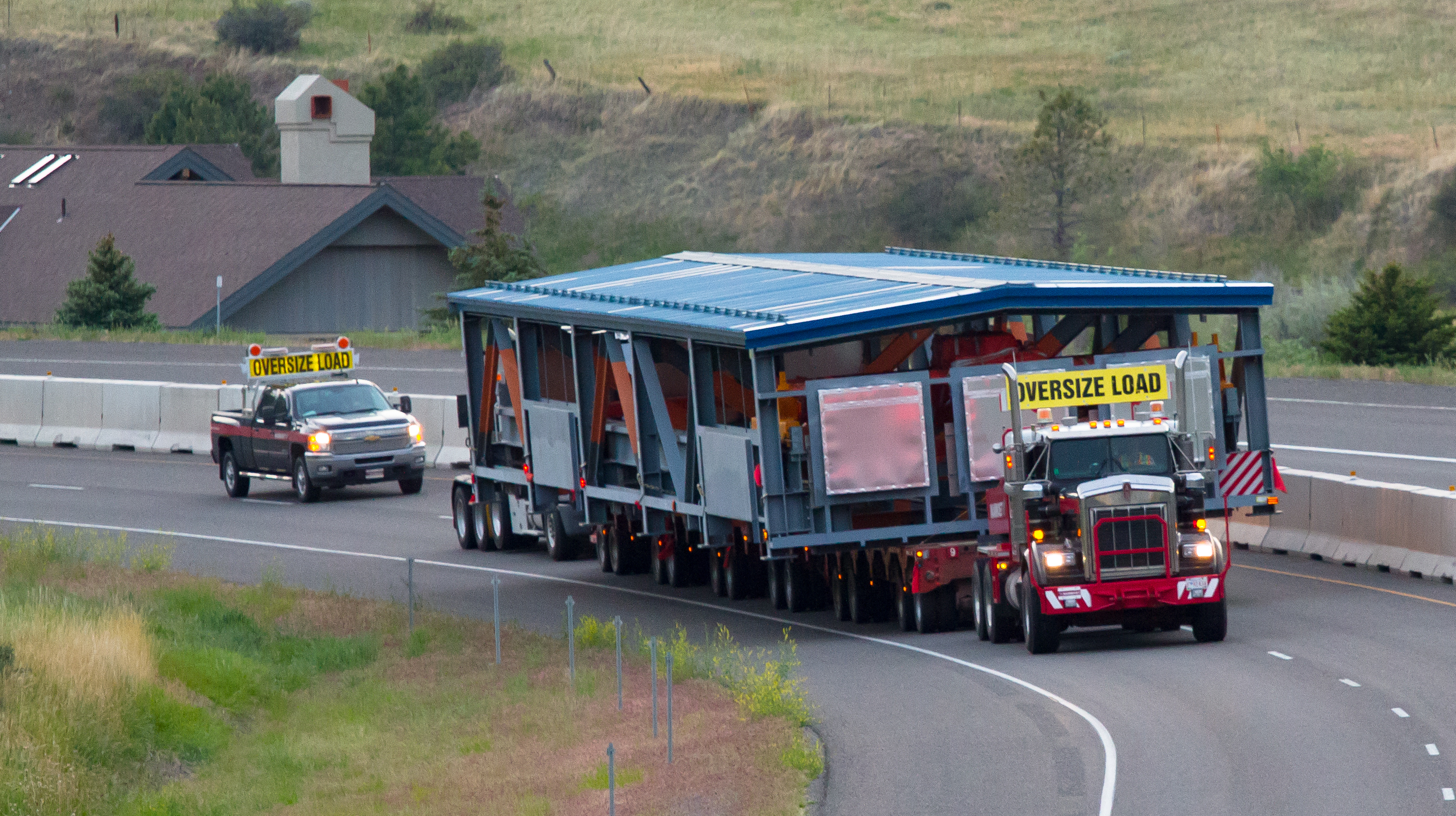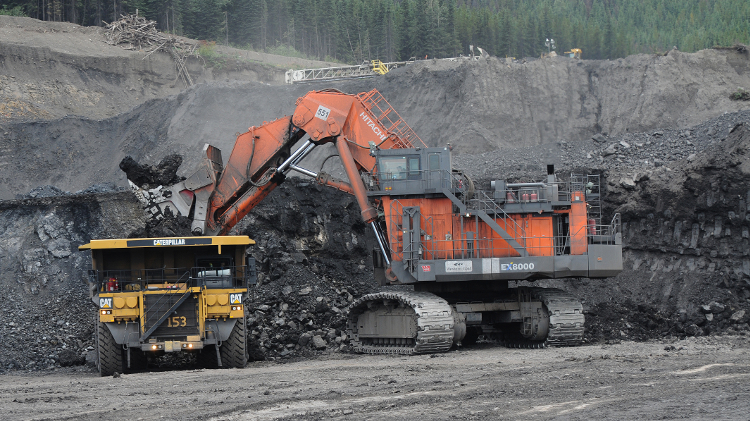In the summer of 2011, after four and a half years of meticulous planning and construction, Copper Mountain Corporation’s flagship mine near the town of Princeton, B.C. commenced production and began extracting ore from its five billion pounds of copper resource on its 18,000-acre site. Almost everything worked as projected with one daunting exception: the mill’s designed throughput rates were not being consistently met and were lower than anticipated. The missed target threw engineers for a loop. “We’d had a feasibility study and design done,” says the company’s president and CEO, Jim O’Rourke. “The grinding mill suppliers had been involved in it and given us a warranty of capacity, which was never met, and we had an independent consultant and a consulting firm working with us as well. We had a lot of people working on the design. It’s just that the rock didn’t react the way it was supposed to.”
Based on the design and feasibility studies using samples from the site, the rock was supposed to go through the primary crusher, coming out of it in 5.5-inch chunks that would then go into the mine’s 34-foot diameter x 20-foot, 17,000 horsepower SAG Mill, producing a throughput rate of 35,000 tonnes per day. Instead, in the first quarter of 2013, the average throughput rate was 24,900 tonnes per day.
Rather than rely on more rock samples, Copper Mountain installed cameras on the SAG mill feed conveyor to monitor the ore size as well as provide a 3D image of the ore entering the mill. The information provided by these cameras was very important because it demonstrated the inverse relationship between feed size and throughput. “It was very clear that when we had five percent or less of plus four-inch ore entering the mill, we were getting good tonnage, in fact, over design. But when the ratio of plus four-inch ore came up to about 30 per cent or so of the mill feed, the tonnage would drop way back,” recalls O’Rourke. The deposit has some very hard rock that instead of being crushed in the SAG mill was simply being worn down in size.
Not willing to accept lower than predicted output, the mine’s team leaped into action and introduced several temporary measures to increase throughput. First, they implemented high-energy blasting in early 2013 to improve ore fragmentation and create more fines in the feed. But they also continued looking for a more effective and long-term solution. In March 2013, they tried something new: they ran a full-scale production test whereby 70,000 tonnes of ore was crushed to minus two inches in size using a contractor’s portable crusher to feed the SAG mill. “We achieved and surpassed design capacity,” says O’Rourke. “We then knew that finer crushing was the solution.”
In early 2013, the mine contracted a temporary crushing unit to crush up to 7,500 tonnes per day of minus two-inch material. In August of that year, the mine purchased its own portable crusher and in December added a third crusher from a contractor. About 30 per cent of the feed going into the SAG mill was at that point crushed down to minus two inches in size with the portable crushers, resulting in its throughput rate increasing to 30,450 tonnes per day by the second quarter of 2014. However, there were two setbacks with these temporary measures: one was they could not handle 100 per cent of the total mill feed; the second was that the extra crushers cost $1.3 million a month.
To achieve the targeted SAG mill throughput rate, Copper Mountain needed to install a permanent secondary crusher that could crush 100 per cent of the ore to minus two inches in size. It had to be a high-performance, massive crusher, capable of handling high tonnage. After completing an engineering study that confirmed viability of the secondary crusher, Copper Mountain chose the FLSmidth Raptor 2000, the largest cone crusher on the market, with technology that has been proven to be capable of handling applications like theirs. At the time, there were only two other such crushers installed in the world and the one at Copper Mountain would be the third.
Race against time and the odds
Staff at Copper Mountain chose to directly manage all of the transportation and logistics themselves rather than outsource the delivery to the equipment supplier. “Freight forwarding options can change very quickly as vessels are available in different ports, and that window of opportunity is sometimes very short so you have to make very quick decisions,” says Walt Halipchuk, the company’s administration manager who, along with a team of two logistics specialists from Panalpina’s Pan Project group, worked long hours to co-ordinate every step from procurement to delivery. “We were able to reduce the decision-making process, review options and reply back within 24 to 48 hours, which is a huge advantage.”
The company ordered the crusher on December 6, 2013. Only 30 days later, and over the Christmas holiday, the four main components; the lower main frame, which weighs over 100 tonnes, the upper main frame, the bowl short head and the adjustment ring – for a total combined weight of 260 tonnes – were trucked from the manufacturing plant in Bucharest, Romania to that country’s Port of Constanta. From there, the cargo was shipped over water to Venice, Italy. Rather than make Vancouver its destination, Halipchuk chose Halifax because the road trip between Vancouver and the mine site includes 35 bridges, all of which would have required bridge-load bearing calculations and engineering, given the cargo’s weight. By contrast, there are only 13 bridges between Kamloops and Princeton. So Halipchuk had the cargo shipped to the Maritimes and contracted CN Rail to handle the cross-country transportation.
All went well when the cargo with the four major components left Venice, but then a hurricane hit the Atlantic and the ship had to be diverted. Still, on Feb. 2, the crusher’s main components arrived safely in Nova Scotia. In late March, the cargo reached Kamloops via specialized rail cars and was put on a massive transport truck with 108 wheels ready to travel a carefully planned trip over four nights so as to minimize traffic disruption. “We had a whole traffic management plan and an engineer personally supervising every bridge crossing,” says Halipchuk.
On March 18, during the final stretch, an unexpected hurdle developed: a road tension crack appeared from a slope failure caused by spring runoff on a two-lane section of the Provincial Highway 5A 45 kilometres north of Princeton. Copper Mountain responded rapidly, working with Ministry of Transport engineers, contract surveyors, civil and geo-technical engineers, the local aggregate supplier, trucking firms, road repair crews, traffic control services, and project management – and footing the bill. “It was a little bit like sending in the navy Seals,” Halipchuk says.
The repair work was completed on March 21 and the truck rolled by 15 minutes later, arriving in Princeton at 2:30 a.m., as originally scheduled.
Since the crusher was built with parts from Romania, several U.S. states, Germany, China, and Canada, there were a lot more logistics involved. “The major components are all very exciting but you can’t overlook the smallest detail,” says Halipchuk. “So you go from these 260-tonne components to an electrical component that maybe weighs a pound but is equally important to the project. As they say, ‘For want of a nail.’”
Meanwhile, back at the site
Between December to late March, construction management company Merit Consultants International Inc. was working to have all the preparation completed before the truck with the major crusher parts arrived. “Once we started receiving more equipment, we rounded up from about 15 people to 60 and worked 24 hours a day, seven days a week,” says Moe Theriault, Merit’s construction manager for the project. They erected the crusher building, installed the crusher using a large crane – no easy feat due to the weight of the parts – and revamped the conveyer system, including inserting a short transfer chute into the kilometre-long section. This was done with precise timing during a planned four-day shutdown of the primary crusher and with no disruption to the mill operations, as there was enough ore stockpiled to keep operating.
By the end of July, just seven months after the start of construction, the $40-million secondary crusher was built on time and on budget, with testing and commissioning finalized in August.
“There are always hiccups in construction, but when you have a great team, the team gets together and overcomes all the hiccups,” says O’Rourke. As Copper Mountain celebrates the completion of this latest ambitious mission, it has also uncovered another bit of great news: the deposit will support a mine life that is at least two years longer than estimated back in 2011.



